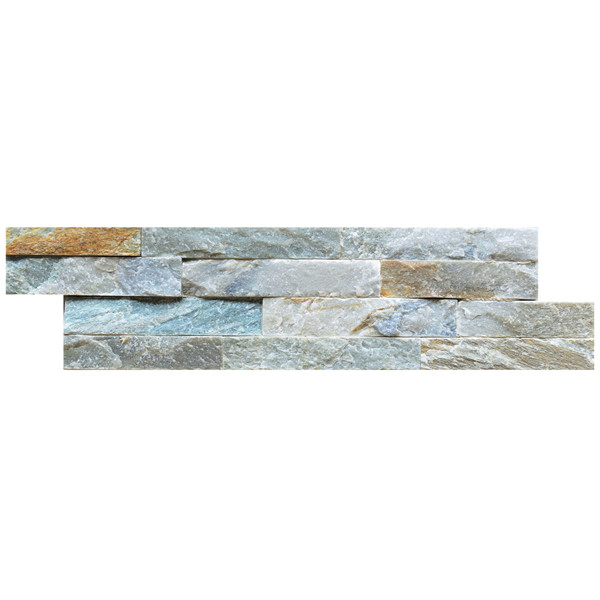Introduction
Stone veneer facade has become a popular choice for architects, designers, and homeowners looking to enhance the aesthetic appeal of buildings. Stone veneer offers a versatile and cost-effective solution for achieving the look of natural stone without the need for expensive installation or maintenance. In this article, we will explore the benefits, applications, installation methods, and design considerations of stone veneer facade in detail.
Benefits of Stone Veneer Facade
One of the primary benefits of stone veneer facade is its cost-effectiveness compared to natural stone. Stone veneer is manufactured using lightweight materials such as concrete or polyurethane, making it more affordable and easier to install. Despite its lower cost, stone veneer closely mimics the appearance of natural stone, providing a high-end look without the hefty price tag.
Another advantage of stone veneer facade is its versatility in design. Stone veneer comes in a wide range of colors, textures, and shapes, allowing for endless customization possibilities. Whether you are aiming for a rustic, modern, or traditional look, there is a stone veneer option to suit your design preferences. Additionally, stone veneer can be easily cut and shaped to fit any architectural style or project requirements.
In terms of durability, stone veneer facade is highly resistant to weathering, fading, and damage from insects or moisture. Its robust construction ensures long-lasting performance and minimal maintenance, making it an ideal choice for exterior applications. Stone veneer is also fire-resistant, adding an extra layer of safety and protection to buildings.
Applications of Stone Veneer Facade
Stone veneer facade is a versatile material that can be used in a variety of applications, both indoors and outdoors. Some common applications of stone veneer facade include:
1. Exterior Facades: Stone veneer can be applied to the exterior of buildings to create a striking and durable facade. Whether used as a full cladding or in combination with other materials, stone veneer adds texture and visual interest to architectural designs.
2. Accent Walls: Stone veneer can be used to create accent walls in interior spaces such as living rooms, kitchens, and bedrooms. An accent wall made of stone veneer can serve as a focal point, adding warmth and character to the room.
3. Fireplaces: Stone veneer is a popular choice for fireplace surrounds and mantels. Its natural look and texture enhance the cozy ambiance of a fireplace, making it a perfect addition to any home.
4. Garden Walls: Stone veneer can be used to construct garden walls, retaining walls, and outdoor seating areas. Its durability and weather resistance make it an excellent choice for outdoor landscaping projects.

Installation Methods
There are several methods for installing stone veneer facade, each with its own advantages and considerations. The most common installation methods include:
1. Mortar Application: The traditional method of installing stone veneer involves applying a layer of mortar to the substrate and then pressing the stone veneer into place. Mortar provides a strong bond and ensures the stability of the stones. However, this method can be time-consuming and may require skilled labor for proper installation.
2. Adhesive Application: An alternative to mortar application is using adhesive to attach the stone veneer to the substrate. Adhesive installation is quicker and cleaner than mortar application, making it a popular choice for DIY projects or when time is a critical factor. However, adhesive may not provide as strong of a bond as mortar, so it is essential to follow the manufacturer's guidelines for proper installation.
3. Panel Systems: Stone veneer panels are pre-fabricated sheets of stone veneer that can be easily installed using a panel system. Panel systems eliminate the need for individual stone placement and can be quickly installed by interlocking the panels together. This method is efficient and suitable for large-scale projects or when a consistent look is desired.
Design Considerations
When incorporating stone veneer facade into architectural designs, several key considerations should be taken into account to ensure a successful outcome. Some design considerations for stone veneer facade include:
1. Color and Texture: Choose a stone veneer color and texture that complements the overall design scheme of the building. Consider the surrounding environment, architectural style, and desired aesthetic when selecting the stone veneer.
2. Scale and Proportion: Pay attention to the scale and proportion of the stone veneer to ensure it fits harmoniously with the building's proportions and architectural elements. Avoid overpowering or underwhelming the facade with the size of the stones.
3. Subway mosaic tile for classic charm and Grouting: Proper jointing and grouting techniques are essential for achieving a professional and cohesive look with stone veneer. Pay attention to the spacing between stones and the color of the grout to create a seamless finish.
4. Maintenance and Care: While stone veneer is low-maintenance compared to natural stone, regular cleaning and inspection are still necessary to preserve its appearance and longevity. Follow the manufacturer's recommendations for cleaning and maintenance to ensure the facade remains in top condition.
Conclusion
Stone veneer facade offers a cost-effective, versatile, and durable solution for enhancing the architectural appeal of buildings. With its wide range of design options, easy installation methods, and low maintenance requirements, stone veneer is a popular choice for both residential and commercial projects. By considering the benefits, applications, installation methods, and design considerations of stone veneer facade discussed in this article, architects, designers, and homeowners can make informed decisions when incorporating this versatile material into their designs.
